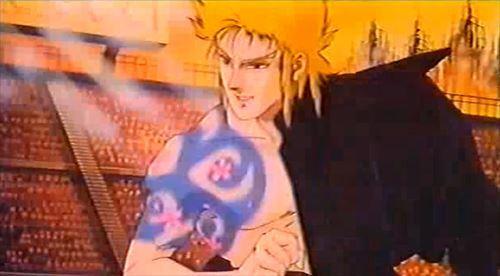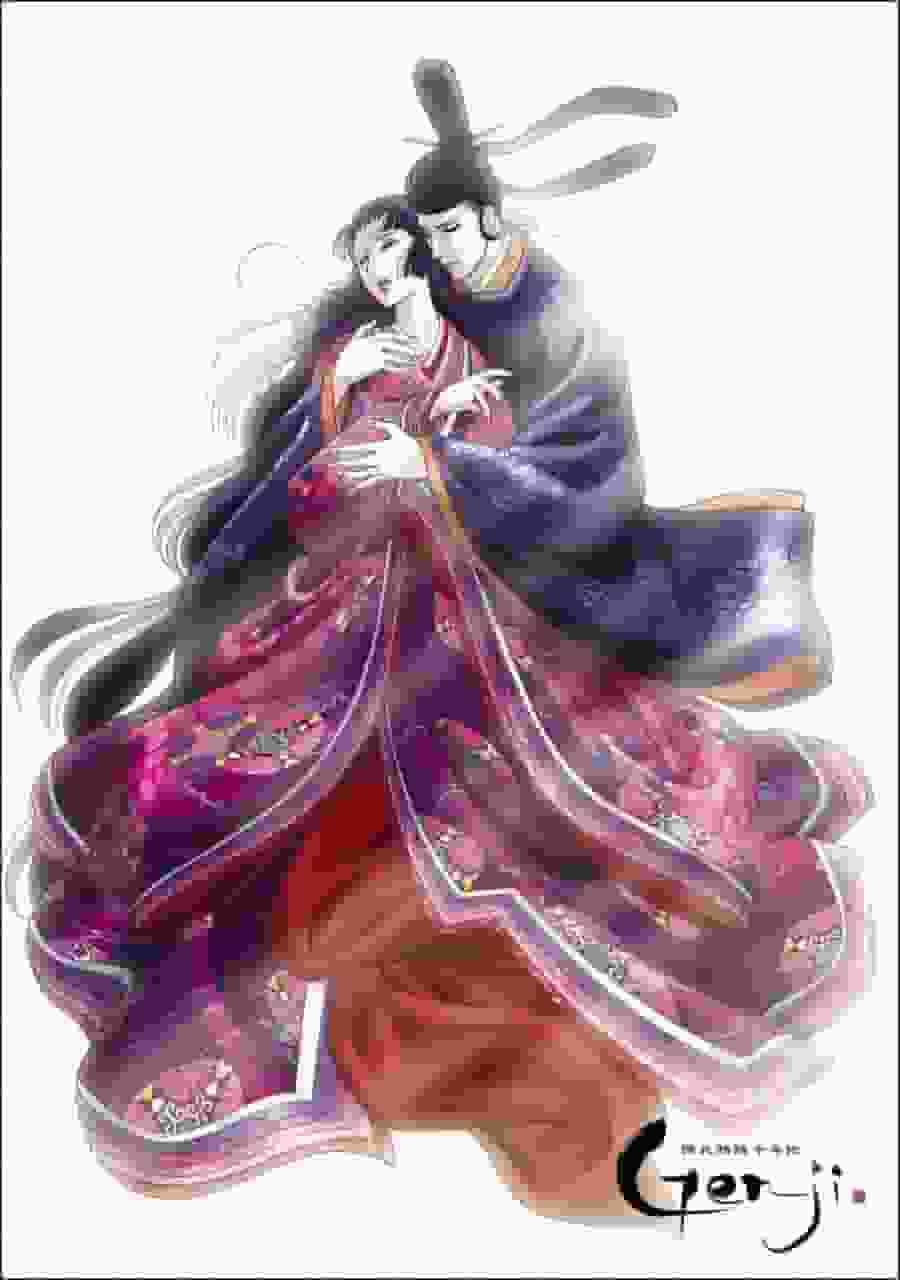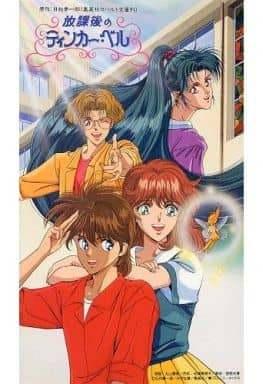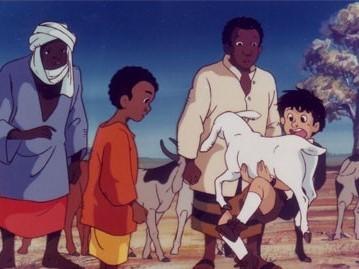"Boogiepop Doesn't Laugh" Review: What is the appeal of this mysterious hero?
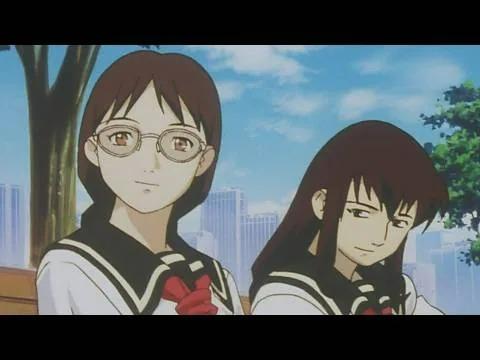
Boogiepop Doesn't Laugh - The Tale of the Abyss and Its Charm■Overview of the workBoogiepop Doesn't Laugh is a TV anime series based on the light novel by Kohei Kadono, which was broadcast on TV Tokyo and other broadcasting stations nationwide from January 5 to March 22, 2000. It consists of 12 episodes, each 30 minutes long, directed by Takashi Watanabe and produced by Madhouse. This work is an original story that follows on from the original, and was developed as a media mix project linked to the film version released in the same year. Scenes and lines from the original work also appear, but some are based on those in the film version. The cast is mainly made up of young voice actors, including Mayumi Asano, Jun Fukuyama, and Sanae Kobayashi. ■ Story and Characters"Boogiepop Doesn't Laugh" is a story that revolves around the mysterious beings "Boogiepop" and "Manticore Phantom". Boogiepop is a mysterious person who has the same face as Yurihara Minako and wears the same clothes as Boogiepop, and he captures evolved people and protects them in a state of suspended animation so that they will wake up in the era they are meant to be in. His true identity is the "Manticore's Trauma", which became electromagnetically fixed as interference fringes when Echoes turned to light, and he shares quantum vibrations of the electromagnetic field with Manticore Phantom. The setting that if one disappears, the other will also disappear adds depth to the story. Meanwhile, Manticore Phantom is a mysterious figure who looks just like Masami Saotome, and his true identity is the "memories of Manticore" that were electromagnetically fixed as interference fringes when Echoes turned to light. He shares quantum vibrations of the electromagnetic field with Boogiepop Phantom, and when one of them disappears, the other should also disappear, but he takes over the body of Ichiro Kishida (Shinpei Kuroda), who also exists as quantum vibrations of the electromagnetic field, and escapes, causing another incident later. Kisaragi Manaka is a mysterious girl who plays with a "butterfly of light" that recalls the past; she is actually 5 years old, but looks 15 or 16. Her pure thoughts awaken the "world crisis," and she holds the key to the story. Poom-Poom is a mysterious boy dressed as the Pied Piper of Hamelin, who tries to create a "kingdom" by extracting phantoms of the past from young people who hate reality (the ones who are extracted become like empty shells). The phantom of Oikawa Chin's past, materialized by Manaka, takes the form of a character created by Kojima Akane, and is a different entity from Nakajo Mizuki's "Poom-Poom." Officer Morita (Snake Eye) is a police officer working at a local police box, but his true identity is a synthetic human from the Unification Agency who was sent to eliminate MPLS. He attacks the Oikawa siblings and is killed in return. He has the ability to erase the memories of anyone who looks into his eyes, and when attacking, he transforms into a soft, snake-like body. Tonomura Moto is a girl with a clean freak-like obsession, and was a classmate of Saotome Masami in middle school, and had feelings for him. The story progresses when she meets Manticore Phantom. Suzuki Yasuko is Moto's best friend, and is Saotome Masami's former girlfriend, as mentioned in "Boogiepop Doesn't Laugh". ■Episodes and subtitlesThe subtitles for each episode are as follows:
■ Theme songs and musicThe opening theme is "Yuudachi" by Suga Shikao, with lyrics, composition, and arrangement by Suga Shikao. The ending theme is "Mirai Seiki (Secret) Club" by Kyoko, with lyrics by Kyoko, composition by Kyoko and Baba Kazuyoshi, arrangement by Mirai Seiki PROJECT, and singing by Kyoko. These songs are important elements that enhance the atmosphere of the story. ■ Production staffMany staff members were involved in the production of this work. The original work was written by Kohei Kadono, the director was Takashi Watanabe, the assistant director was Kenji Yasuda, the series composition was Sadayuki Murai, the original character design was Tsuyoshi Ogata, the character design was Shigeyuki Suga, the art supervision was Hiroshi Kato, the art directors were Yuka Hirama and Izumi Hoki, the art setting was Akihiro Hirasawa, the color setting was Rumiko Suzuki, the director of photography was Takashi Yasutsuhata, the editor was Takeshi Seyama, the sound director was Yota Tsuruoka, and the producers were Masao Maruyama, Yasuo Ueda, and Kazuya Furuse. The animation was produced by Madhouse, with animation production cooperation from Triangle Staff, and the production was done by Project Boogiepop. ■ Appeal and evaluation of the work"Boogiepop Doesn't Laugh" has captivated many fans with its unique worldview and profound themes. The story skillfully depicts a complex timeline and the relationships between the characters, encouraging viewers to think deeply. In particular, the existence of Boogiepop and the Manticore Phantom blurs the boundary between reality and fantasy, asking viewers the question, "What is the truth?" Additionally, the depiction of the purity and danger of characters such as Kisaragi Manaka and Poom Poom adds tension and depth to the story. The animation quality is also high, with beautiful visuals and meticulous direction by Madhouse enhancing the story. In particular, the characters' expressions and movements express the subtleties of their emotions in detail, eliciting empathy from the viewer. Music is also an important element in enhancing the atmosphere of the story, and the songs by Suga Shikao and Kyoko left a deep impression on the viewers. The series has been highly praised not only by fans of the original work, but also by anime fans in general, and has been praised for its unique storytelling and the appeal of its characters. It is also linked to the film adaptation as a media mix project, and has been praised for further expanding the worldview of the original work. ■ Recommendations and related worksFor those who enjoyed "Boogiepop Doesn't Laugh," we also recommend "Boogiepop and Others" and "Boogiepop Phantom," both of which are also by Kohei Kamiya. These works delve even deeper into the world of "Boogiepop Doesn't Laugh," making them a must-see for fans. In addition, "Paprika" and "Summer Wars," also produced by Madhouse, are also recommended as works with beautiful visuals and profound themes. Furthermore, if you like mysterious characters and complex stories, we also recommend the "Evangelion" and "Ghost in the Shell" series. Like "Boogiepop Doesn't Laugh," these works question the boundaries between reality and fantasy, encouraging viewers to think deeply. Conclusion"Boogiepop Doesn't Laugh" is a work that has captivated many fans with its unique worldview, profound theme, beautiful visuals and music. This work skillfully depicts a complex timeline and character relationships, encouraging viewers to think deeply, making it a must-see for anime fans. It is highly recommended not only for fans of the original work, but also for those who want to enjoy anime from a new perspective. Please give this profound story a try. |
<<: The appeal and reviews of "Candidates": A fusion of myth and youth
>>: The appeal and reviews of "POPEE the Performer": A unique world view you can't miss
Recommend
The official trailer of the movie "Kishibe Rohan, I Don't Move" will be released on May 26
The live-action movie "Kishibe Rohan: Trip t...
The special behind-the-scenes video of the new musical of Death Note is released, which is unique and appealing
The latest musical "Death Note" adapted...
New stills of the Japanese drama "Teaching Field 0" starring Kimura Takuya are scheduled to be broadcast in April
The new series of the popular Japanese drama &quo...
A simple island-style film is coming! The latest hot trailer of the new movie "Chainsaw Girl RED"
The latest live-action movie adapted from the blo...
Gal Gadot stars in 007-style spy film "Heart of Stone" and signs eight-figure contract
Gal Gadot starred in the spy thriller "Heart...
42nd Golden Raspberry Awards announced: LeBron James won the Worst Actor
Recently, the winners of the 42nd Golden Raspberr...
The first volume of the TV animation "New Sakura Wars" Blu-ray disc will be released on May 20
The spin-off TV animation of Sega's classic g...
The sequel to Inuyasha, "Yashahime: Princess Half-Demon", is confirmed to be broadcast every Saturday evening.
The TV animation of the sequel to Inuyasha, "...
Review of the movie "Penguin no Mondai": A moving journey to find the blue bird of happiness
Penguin no Mondai: Pen with the Blue Bird of Happ...
Too real: Chinese people's mobile payment rejection in "Midnight Diner" sparks heated discussion
In the latest episode of the fifth season of &quo...
The award-winning animated version of "Assassin's Code" will be broadcast this fall! The four main characters appear
It was previously revealed that Amagi KEI's a...
Nolan: Hollywood needs to release both blockbusters and small projects to succeed
Famous director Christopher Nolan recently expres...
Dumbledore's actor son questions: Why make a Harry Potter reboot?
Oscar-winning actor Richard Harris played Headmas...
The second season of TV animation "Re:Zero" will be broadcast in 2023
The second season of the new TV animation "R...
HBO's Westworld Season 3 romantic trailer released
Today (February 25), the romantic trailer for the...


